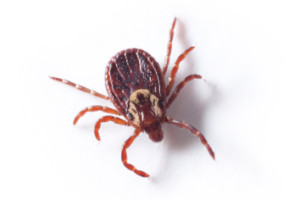
Small, round to teardrop-shaped with 8 legs and a protruding head
ColorReddish brown to black
Size5 millimeters
HabitatIn wooded areas, dense foliage, as well as attached to a host animal
Interesting FactsAfter attaching themselves to a host, ticks secrete an anesthesia-type compound to prevent the host from knowing the tick is there, thus prolonging its feeding